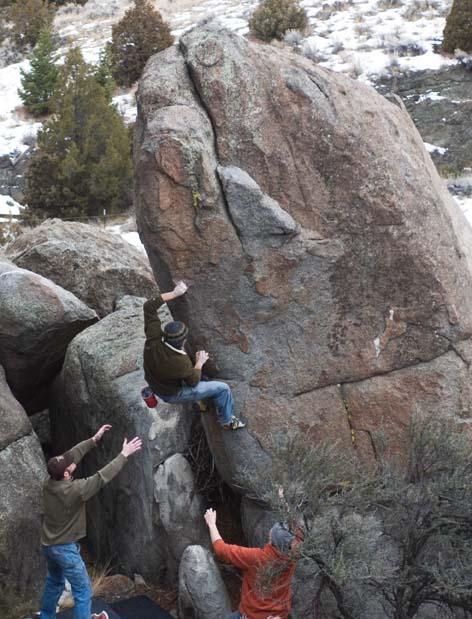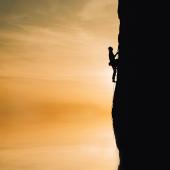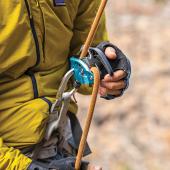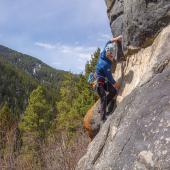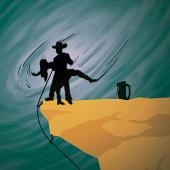Pebble Wrestling
“You’ve gotta check out this arête, it’s amazing,” Tom Kingsbury urges on one of his many guided tours through the Desert, a bouldering area outside Whitehall. The six climbers following him gather around the blunt, overhanging arête and spread their thick foam bouldering pads around the base. As the group looks up, Tom points out the tiny edges and features that could allow someone to ascend this 15 feet of granite—but not without a lot of effort. Taking turns, each climber inches just a little higher than the last, fueled by the group’s endless encouragement. Then, with a climber halfway up, a chunk of rock blows off in his hand and he plunges to the pads. With the group cheering and laughing, Tom rushes over and ribs his fallen comrade, “That was the best hold on the arête! I could barely climb it before, now it’s gonna be way too hard.”
As bouldering slowly gained popularity around the U.S., strong Bozeman-area climbers began to invest more and more time developing boulders around southwest Montana. And while good stone can be found in Yankee Jim and scattered throughout Hyalite and Bear Canyon, the real potential lies west—just over an hour from town lay the countless granite domes of the Boulder Batholith. Not only do these areas offer hundreds of boulder problems with short approaches, but it’s also one of the few venues in Montana that offers nearly year-round climbing. Popular areas like Whiskey Gulch and the Desert lie in a massive rain shadow—so unless it’s actively precipitating, you can find comfortable climbing conditions. And hidden amongst the endless granite lies something for climbers of every level, from V0- walkups to the hardest boulder problems in Montana.
Climbers from Butte, Bozeman, and other outlying areas have been bouldering in the Batholith since the ‘70s, but new climbers would often claim first ascents of problems bouldered decades ago. Frustrated by the muddy details of nearly 40 years of climbing coupled with “no publish” ethics of the past, Tom decided to begin documenting all the climbing development in the area. Now, over four years later, he’s tracked about 1,200 established boulder problems covering some 43 different sub-areas within the massive 2,000 square-mile batholith.
And even with this extensive development of rock, there’s plenty more to come. “We’re just getting started,” Tom laughs. “The majority of these problems are just five minutes off the road—if people were willing to walk even ten minutes, we could have a thousand more problems.” A late-summer bouldering comp hosted in the Batholith helped gain even more attention, and now new boulder problems are developed on a near weekly basis. Tom hopes that with the massive amount of documentation and new route development that’s taken place within the Batholith so far, this expansive area can become a world-renowned bouldering destination—potentially on par with Joe’s Valley in Utah.
Check out montanabouldering.com and for local updates about new development in the Boulder Batholith and surrounding areas.


